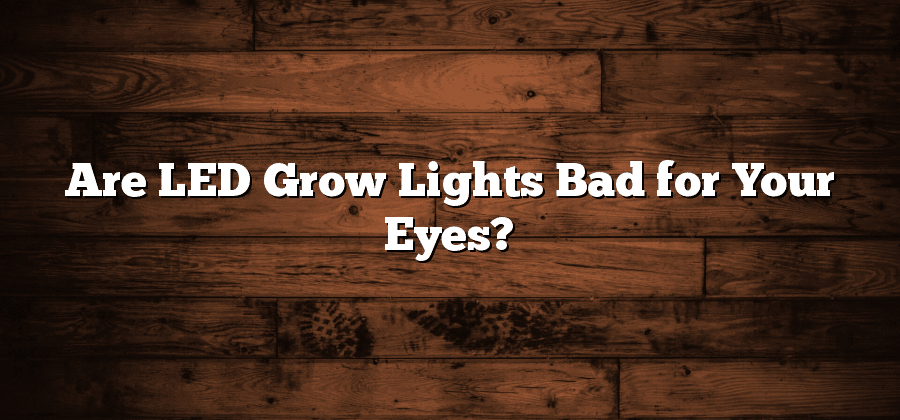Understanding LED Grow Lights
With the growing interest in indoor gardening, LED grow lights have become a popular choice among cultivators. These lights are designed to emit specific wavelengths of light that are essential for plant growth. Unlike traditional lighting systems, LEDs are energy-efficient and produce less heat, making them ideal for enclosed spaces. In addition, LED grow lights can be customized to deliver optimal light conditions for different stages of plant growth, such as vegetative and flowering phases.
When it comes to choosing the right LED grow lights, there are a few key factors to consider. First and foremost, it’s important to understand the specific light spectrum requirements of the plants you are growing. Different types of plants have different light intensity and wavelength preferences. Additionally, the coverage area of the grow space must be taken into account. LED grow lights come in various sizes and power outputs, so it’s crucial to select lights that can adequately cover the desired cultivation area. Lastly, considering the durability and longevity of the lights is essential, as investing in a high-quality LED grow light will ensure long-term sustainability and cost-effectiveness.
Potential Eye Health Concerns
The increasing popularity of LED grow lights in indoor gardening has raised concerns about potential eye health risks. LED lights emit a significant amount of blue light, which has been linked to various eye problems. Prolonged exposure to blue light can lead to a condition known as digital eye strain, causing symptoms such as dry eyes, blurred vision, and headaches.
Furthermore, studies have shown that blue light exposure in the evening can disrupt our sleep-wake cycle, also known as the circadian rhythm. This disruption can affect the quality and duration of our sleep, leading to fatigue and irritability during the day. As a result, it is crucial for indoor gardeners and anyone who spends a significant amount of time exposed to LED grow lights to take precautions to protect their eye health.
Common Misconceptions
LED grow lights have gained popularity in recent years as a sustainable and efficient solution for indoor gardening. However, there are some common misconceptions surrounding these lights that need to be addressed. One misconception is that LED grow lights emit harmful ultraviolet (UV) rays that can damage the eyes. This is simply not true. LED grow lights primarily emit visible light, not UV rays. In fact, LEDs can be designed to emit specific wavelengths of light that are most beneficial for plant growth, without the harmful effects of UV radiation.
Another misconception is that LED grow lights are excessively bright and can cause eye strain or fatigue. While it is true that LED grow lights can be bright, they are designed to produce the optimal light intensity for plants, not humans. Additionally, advancements in LED technology have led to the development of lights with adjustable brightness levels, allowing users to customize the light intensity based on their needs. It is important to note that using LED grow lights in a proper and responsible manner, such as wearing eye protection when necessary and following manufacturer’s guidelines, can help minimize any potential eye strain or discomfort.
Factors Affecting Eye Safety
LED grow lights have rapidly gained popularity in recent years as a highly efficient and cost-effective lighting option for indoor gardening. However, it is crucial to consider the potential eye health concerns associated with the prolonged exposure to these lights. One of the factors affecting eye safety when using LED grow lights is the intensity and duration of exposure. The intensity of the light emitted by these lights is measured in lux, and exposure to excessively high levels of lux can lead to eye discomfort, strain, and even damage. Additionally, the duration of exposure to LED grow lights plays a significant role in eye safety. Prolonged exposure to these lights without adequate breaks can cause eye fatigue and increase the risk of developing symptoms such as dryness, redness, and eye strain. Hence, it is essential to adhere to recommended guidelines for the safe use of LED grow lights to protect eye health.
Another crucial factor affecting eye safety when using LED grow lights is the spectrum of light emitted. LED lights emit different wavelengths of light, including blue light, which has been shown to have potential negative effects on eye health. Blue light has a high energy level and can penetrate the retina more deeply compared to other wavelengths. Prolonged exposure to blue light can potentially increase the risk of developing conditions such as age-related macular degeneration (AMD) and cataracts. It is advisable to choose LED grow lights that have a balanced spectrum of light, including a reduced amount of blue light, to minimize the risk of these eye health concerns. Additionally, using protective eyewear, such as blue-light-blocking glasses, can further reduce the potential harm caused by blue light exposure.
Effects of Blue Light on Eyes
Blue light, a type of high-energy visible (HEV) light, has become an increasingly popular topic of discussion in relation to eye health. The effects of blue light on the eyes have raised concerns among experts, especially with the prevalence of digital screens and LED lighting. Research suggests that prolonged exposure to blue light may contribute to eye strain, dryness, and fatigue. Additionally, some studies propose that blue light exposure, particularly at night, can disrupt the sleep-wake cycle and negatively impact overall well-being.
While the long-term effects of blue light on eye health are still being studied, it is important to note that not all blue light is harmful. In fact, natural sunlight also contains beneficial blue light that helps regulate our circadian rhythm and boosts mood and alertness. However, the growing use of artificial sources like LED screens and energy-efficient light bulbs has increased our exposure to potentially harmful blue light. As a result, individuals are urged to seek ways to minimize unnecessary exposure, such as using blue light filters or reducing screen time before bedtime.






